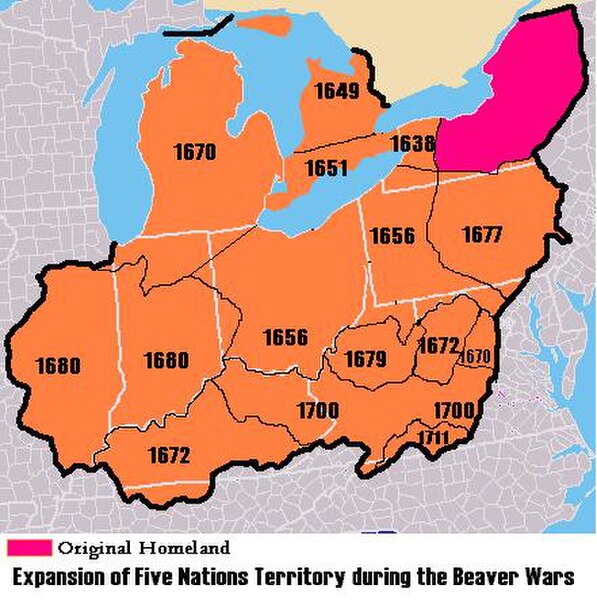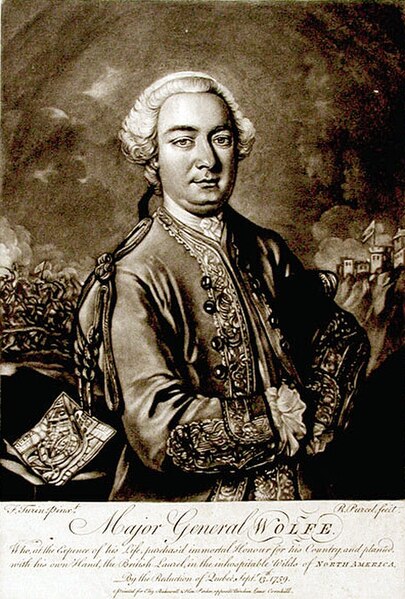Edward Braddock was a British officer and commander-in-chief for the Thirteen Colonies during the start of the French and Indian War (1754–1763), the North American front of what is known in Europe and Canada as the Seven Years' War (1756–1763). He is generally best remembered for his command of a disastrous expedition against the French-occupied Ohio River Valley in 1755; he was killed in the effort.
19th-century engraving of General Braddock's burial near Great Meadows, Pennsylvania
The grave of General Edward Braddock
Dedication Plaque
The French and Indian War (1754–1763) was a theater of the Seven Years' War, which pitted the North American colonies of the British Empire against those of the French, each side being supported by various Native American tribes. At the start of the war, the French colonies had a population of roughly 60,000 settlers, compared with 2 million in the British colonies. The outnumbered French particularly depended on their native allies.
The coureurs des bois were French-Canadian fur traders, who did business with natives throughout the Mississippi and St. Lawrence watershed.
Iroquois expansion, 1711. By the mid-18th century, the Iroquois Confederacy had expanded from Upstate New York to the Ohio Country.
The Cherokee, c. 1762. The Cherokee were subject to diplomatic efforts from the British and French to gain their support or neutrality in the event of a conflict.
General James Wolfe, British commander







